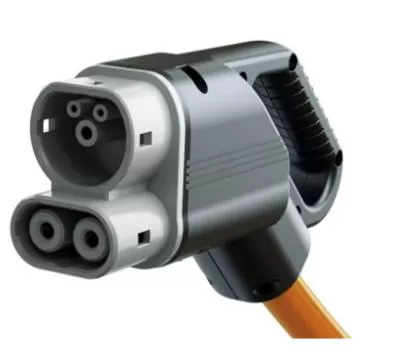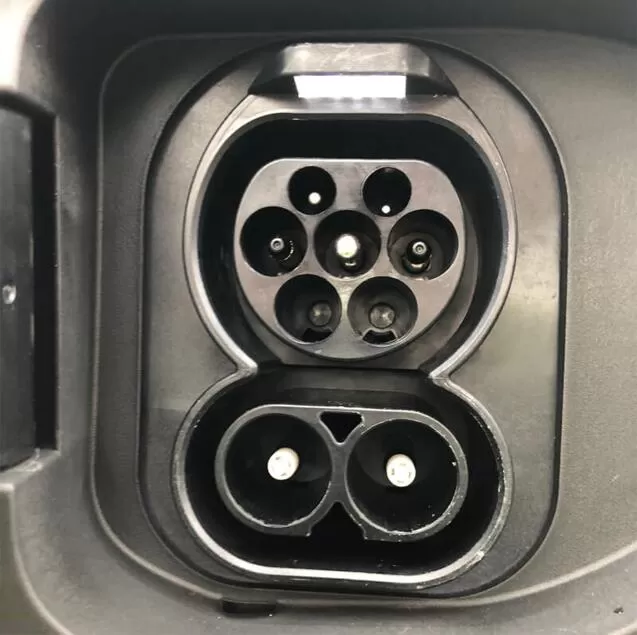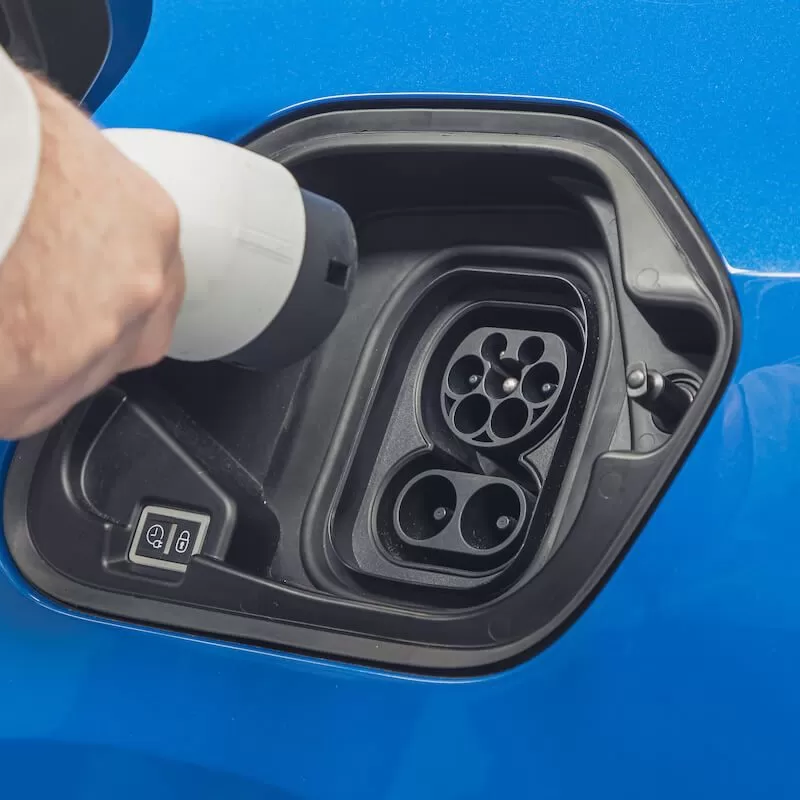These sockets permit rapid DC charging, and are designed to charge up your EV very quickly when you are away from home.
CCS stands for Combined Charging System.
Manufacturers that use it on their new models include Hyundai, Kia, BMW, Audi, Mercedes, MG, Jaguar, Mini, Peugeot, Vauxhall / Opel, Citroen, Nissan, and VW. CCS is becoming very popular.
Tesla is also now offering a CCS socket in Europe, starting with the Model 3 and then Model Y.
Confusing bit coming up: The CCS socket is always combined with either a Type 2 or a Type 1 socket.
For example, in Europe, you will often come across the ‘CCS Combo 2’ connector (see picture) which has the Type 2 AC connector at the top and the CCS DC connector at the bottom.
When you want a rapid charge at a motorway service station, you pick up the tethered Combo 2 plug from the charging machine and insert it into your car’s charging socket. The bottom DC connector will permit the rapid charge, whereas the top type 2 charger socket section isn’t involved in charging on this occasion.
Many rapid CCS chargepoints in the UK and Europe are rated at 50 kW DC, though recent CCS installations are normally 120 kW or 150 kW.
There are even CCS charging stations being installed now that offer an amazingly quick 350 kW charge. Look out for the Ionity network gradually installing these chargers across Europe.
Check the maximum DC charge rate for the electric car you are interested in. The new Peugeot e-208, for example, can charge at up to 100 kW DC (pretty fast).
If you have a CCS Combo 2 socket in your car and want to charge at home on AC, you simply plug in your normal Type 2 plug into the upper half. The lower DC part of the connector remains empty.

CCS Combo 2 plug

CCS Combo 2 socket

Type 2 plug into a CCS Combo 2 socket